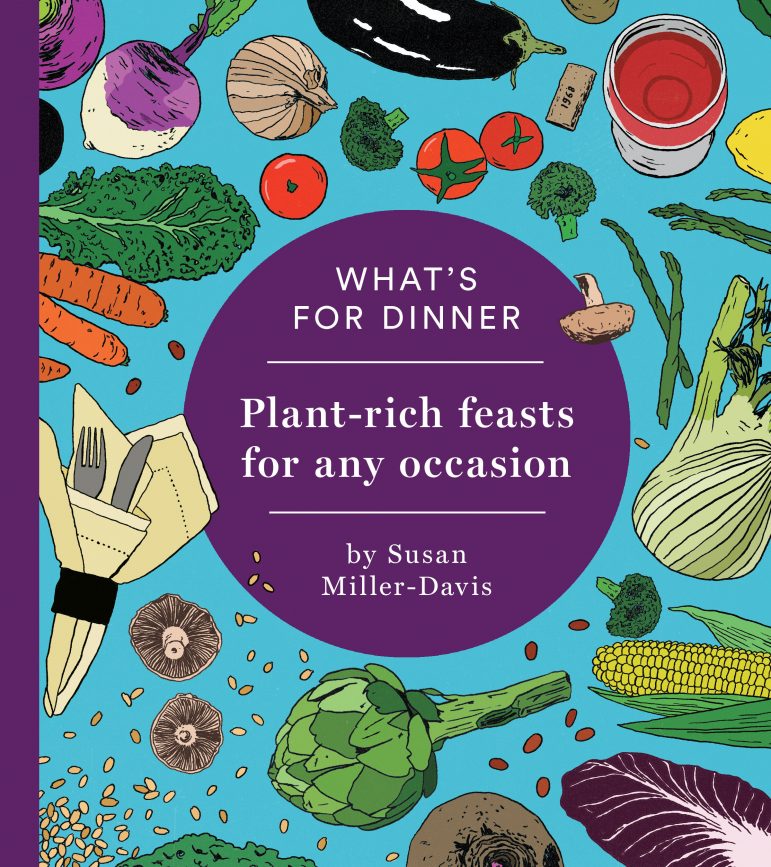It doesn’t get more festive than cooking with bubbly wine, in this case the affordable Italian variety known as Prosecco, which infuses this light, creamy sauce with a fruity and floral goodness as the alcohol burns off. The bonus? There’ll be plenty left in the bottle to refresh the cook or pour a small round of toasts. Loaded with tangy lemon and artichoke flavors, this pasta is for my fellow lovers of the pucker—or am I the only one who sucked on lemon slices as a kid? Baby broccoli also pairs well with the lemon and chiles, in addition to or instead of the artichoke hearts. Without the broccoli, the dish doesn’t have much color, so the scatter of parsley on top is key.
INGREDIENTS:
- 2 tablespoons extra virgin olive oil
- 6 scallions, trimmed of the root end and thinly sliced crosswise (use both the white and green parts)
- ¼ teaspoon red pepper flakes
- 1 teaspoon salt
- 1½ cups dry Prosecco or other sparkling wine (be sure to let the bubbles die down a bit when measuring)
- 4 ounces unsweetened plant-based yogurt
- 5 ounces light coconut milk, from a can which has been shaken well before opening to combine the cream and the water
- 2 Meyer or Eureka lemons, both zested and 1 juiced (reserve remaining unjuiced lemon for another purpose)
- 32 ounce jar of artichoke hearts (about 32 hearts), preferably unmarinated
- 3 cups baby broccoli, steamed (optional)
- 1 pound fresh fettuccine
- ¼ cup chopped flat-leaf parsley
- ¾ cup pine nuts (3 ounces), toasted
- 2 tablespoons nutritional yeast
- A few grinds of pepper
- Parsley for garnish
DIRECTIONS:
- Bring a large pot of salted water to a boil, for cooking the pasta.
- Prepare the artichokes. If you can find plain, unmarinated artichoke hearts (Piedmont Grocery and Berkeley Bowl both carry delicious grilled ones), drain them and cut lengthwise into thin slices, about 3 slices per heart, each with a bit of meaty part attached. If you are using marinated artichoke hearts, simply rinse them well after draining to remove most of the seasoning and oil, and then slice them as above.
- Meanwhile, heat the olive oil over medium in a pot large enough to eventually hold the finished pasta dish. Cook the scallions, stirring occasionally, until softened, 3-5 minutes. Stir in the chile flakes and salt, then whisk in the prosecco, yogurt and coconut milk. Bring to a boil over medium-high heat and reduce to about 1.5 cups and the sauce is thick enough to coat the back of a spoon, about 10-15 minutes.
- Remove the pot from heat and gently stir in the lemon zest, lemon juice and artichokes (and/or broccoli if using). Set aside.
- Prepare the pasta according to the package directions (usually about 2-5 minutes in the boiling water). Drain the pasta, reserving a cup of the starchy cooking water.
- Place the pasta into the pot containing the sauce, place the pot back over a very low burner, and use tongs to gently blend the pasta and sauce. Add the reserved cooking water a bit at a time, along with the nutritional yeast and pepper. Continue to gently toss everything with tongs for a few minutes as the sauce develops a lovely silkiness thanks to the starch in the pasta water.
- Taste to see if you’d like to add more lemon juice (more pucker!) or salt, which works to balance the acidity. Garnish with the parsley and the pine nuts, and offer more nutritional yeast and chile flakes at the table.
Cook’s note: This dish doesn’t keep or reheat well, but you can complete steps 1-4 in advance, rewarming the sauce gently if you refrigerate it before proceeding.
Waste not: The dish gets extra flavor by using the whole lemon, zest, juice and all (except the bitter pith). You can use the zested, juiced lemon hulls as a natural way to clean your garbage disposal.
Reprinted with permission from Stone Pier Press
This recipe will appear in my forthcoming What’s for Dinner: Plant-rich feasts for any occasion, available for pre-order now. The book is the first volume in an eco-cooking series, meeting the dinner challenge with a set of full-bodied, vegan and vegetarian entrées, plus plant-based starters, sides and desserts, meant to anchor celebratory meals.

